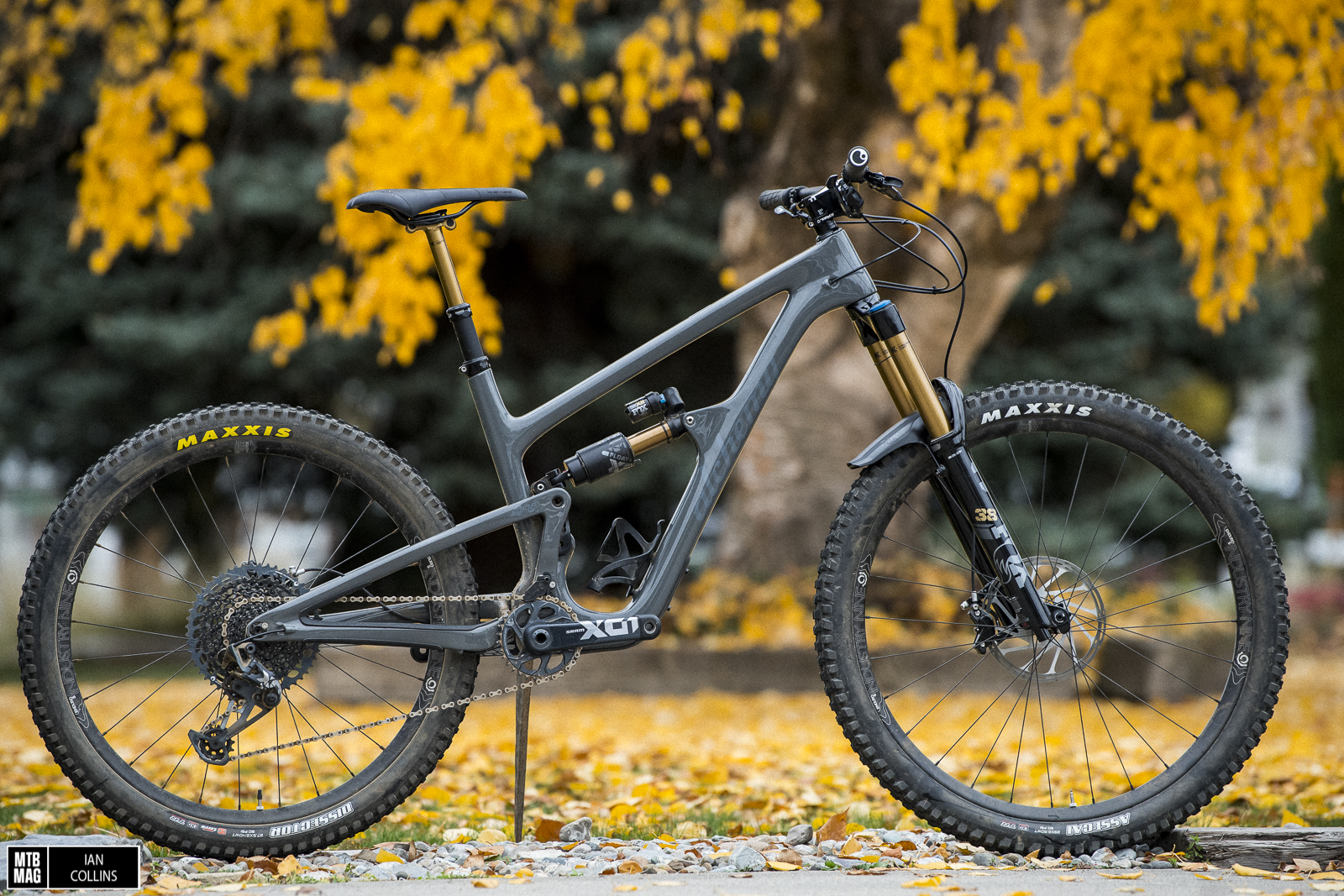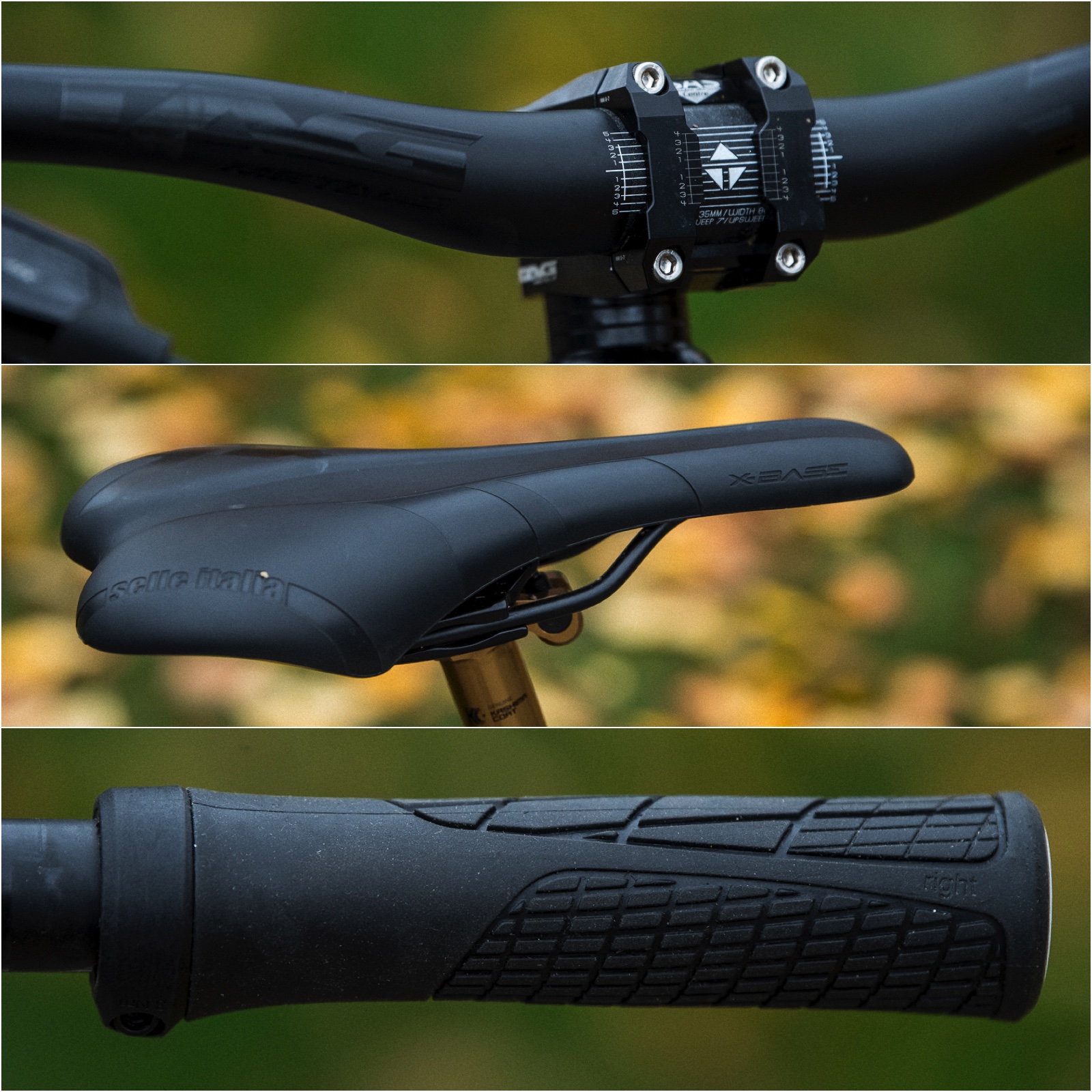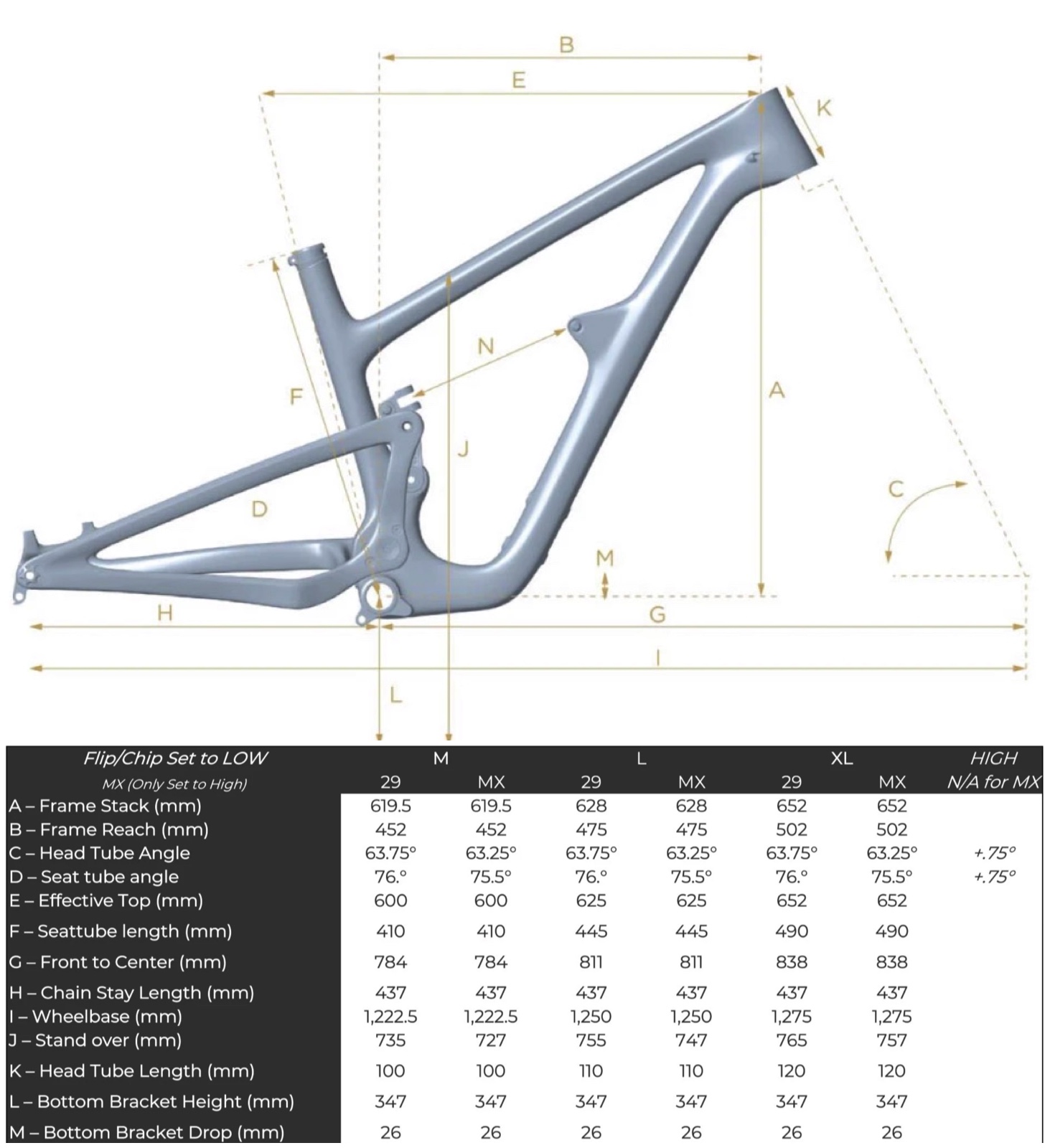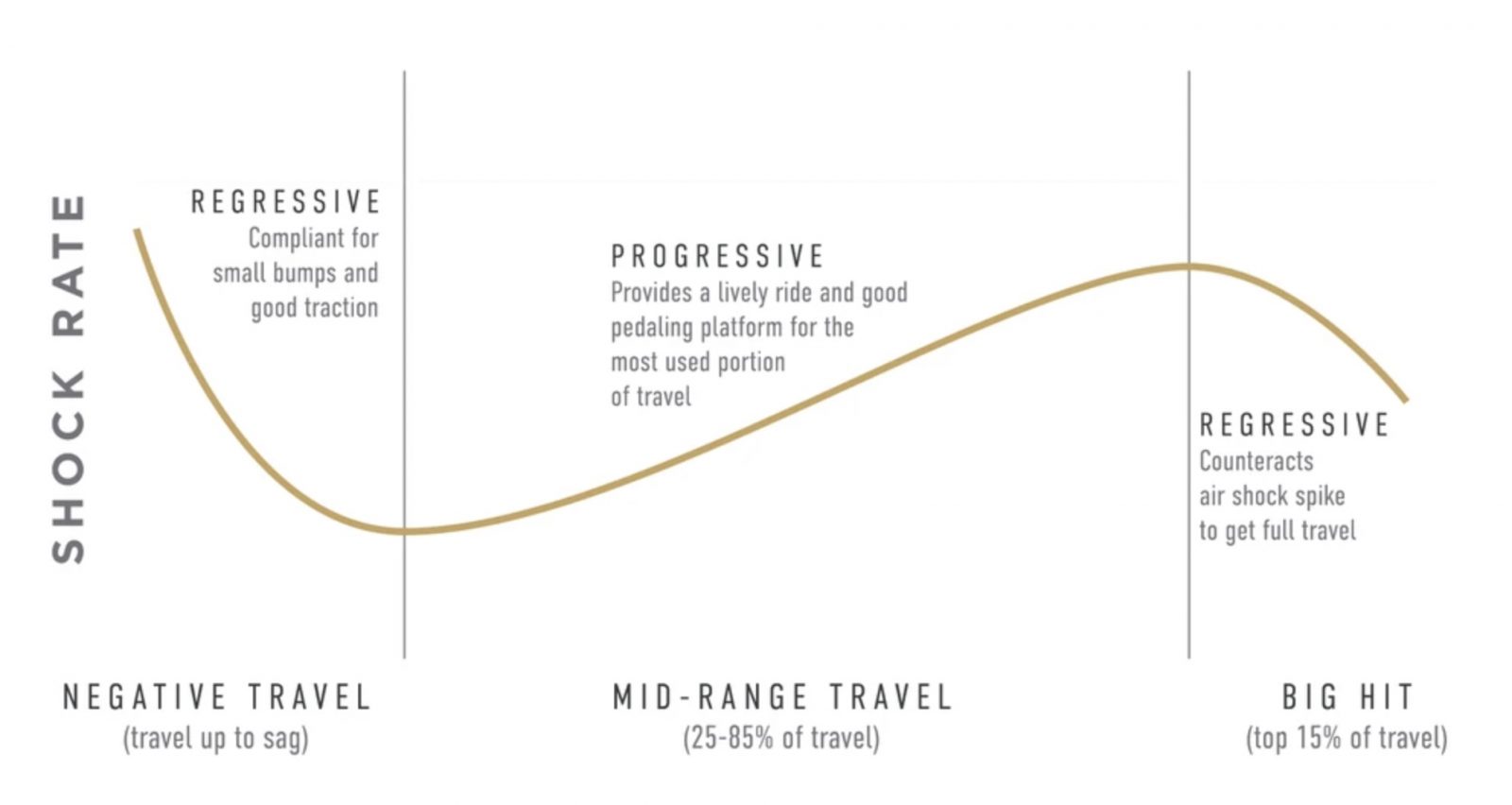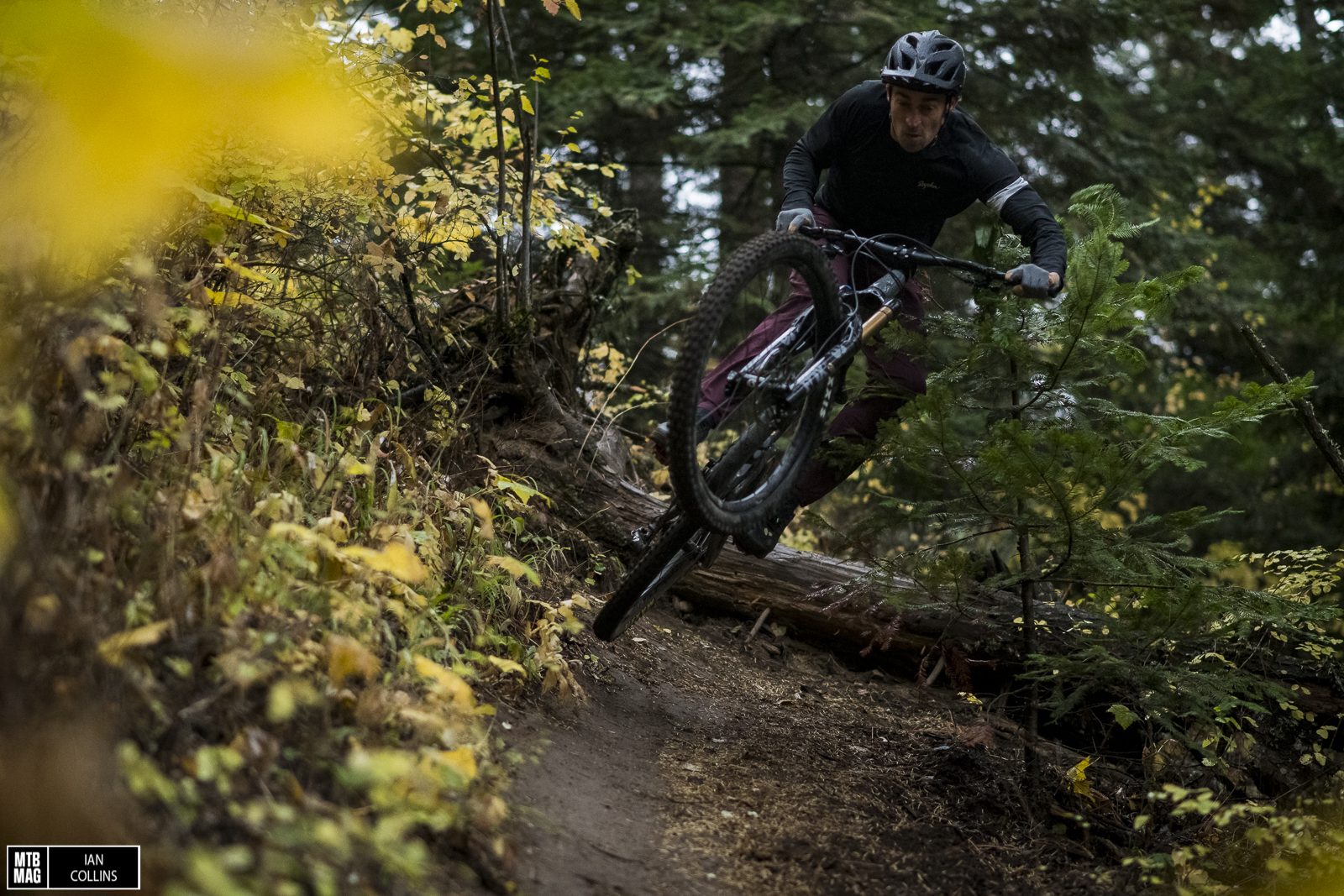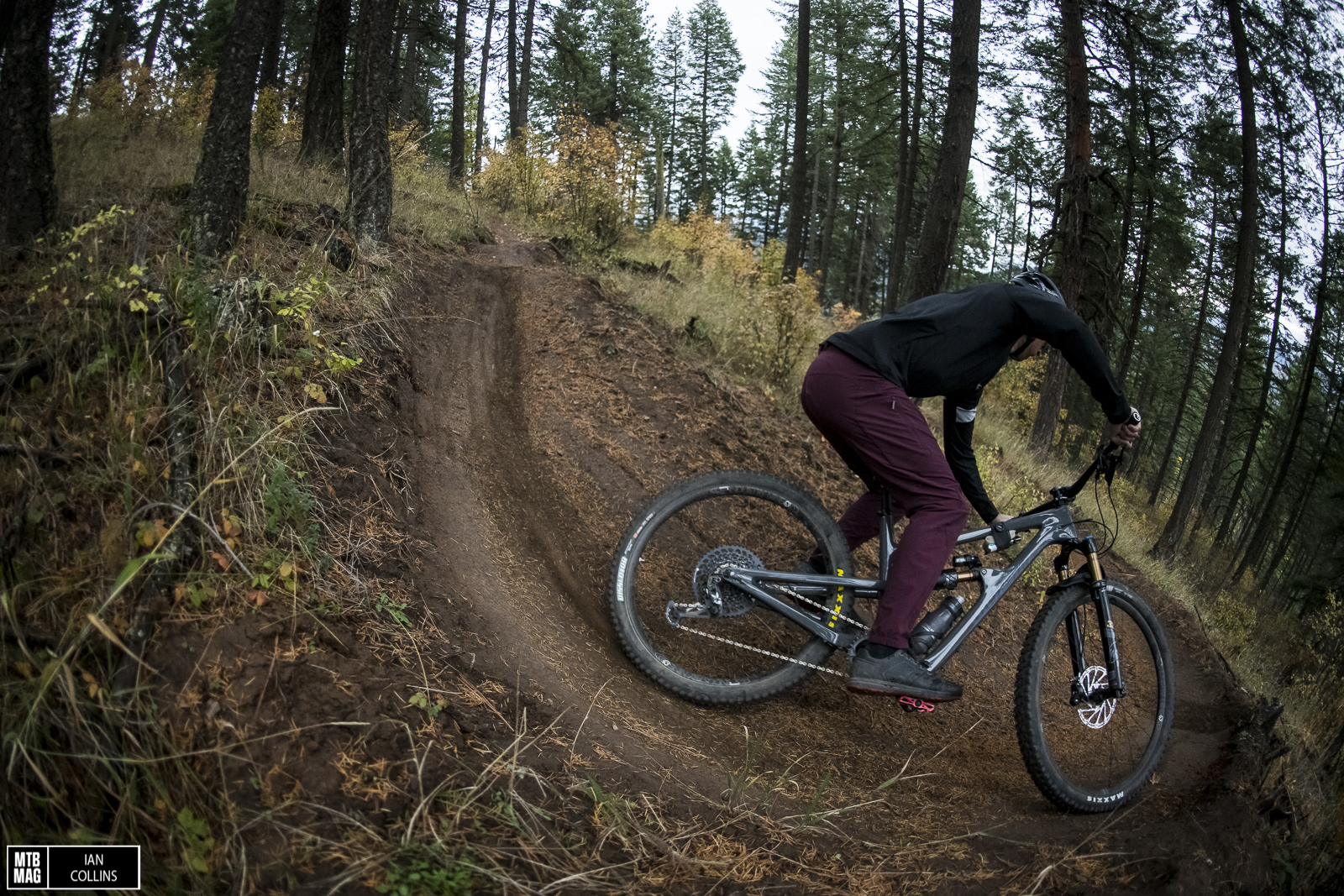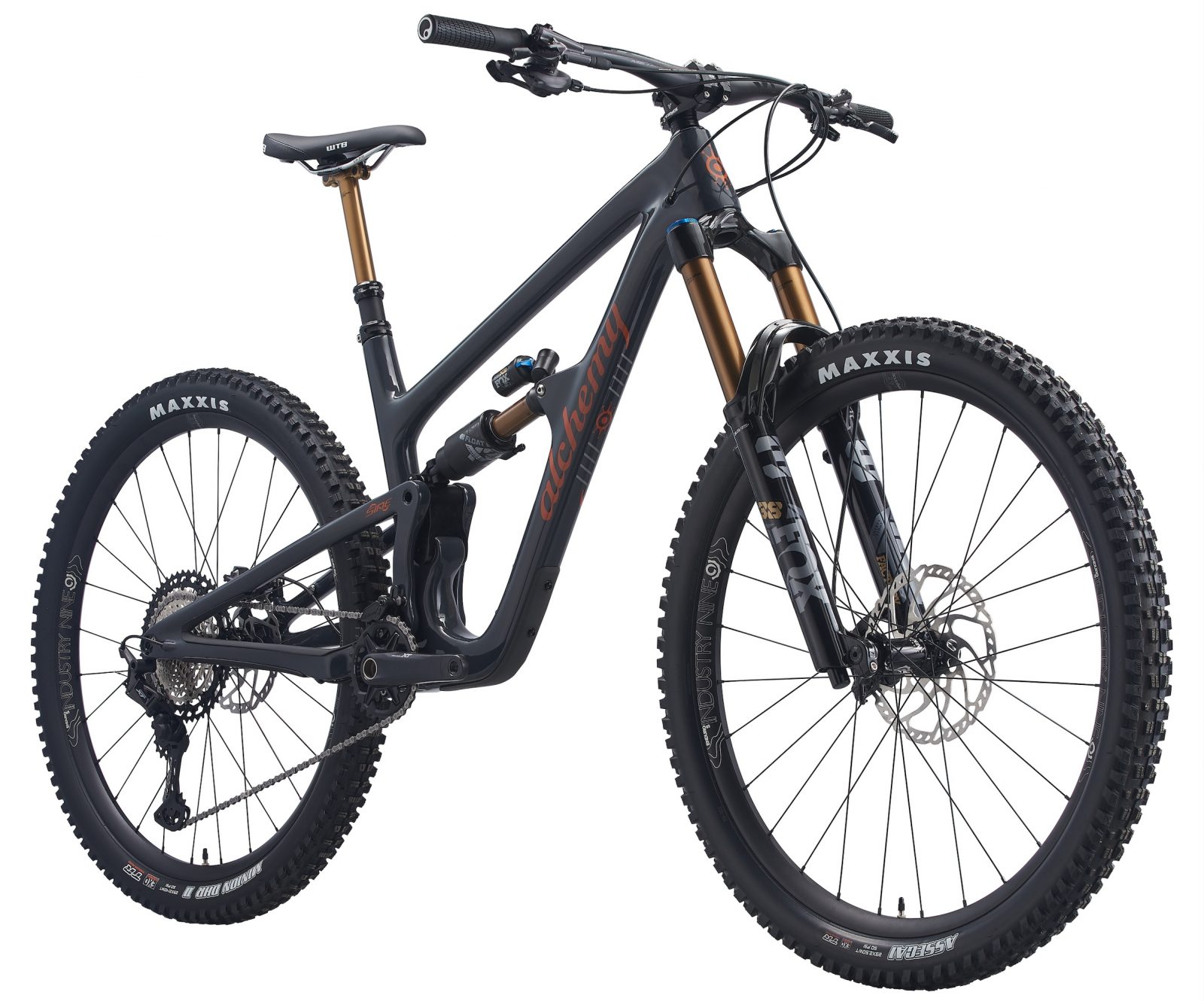It’s been quite some time since I’ve tested a bike with somewhat unconventional suspension kinematics. Enter the Alchemy Arktos 150 – in this case, the Arktos 150 MX. It has a mullet wheel setup and 170mm front travel paired with 150mm of rear travel. Utilizing “Sine” suspension – aptly named after a sine wave, the bike has a rate that runs regressive to progressive, then regressive again. That right there is the unconventional part, but more on the topic of kinematics later. Something that’s interesting about the Arktos lineup is just how neatly spread across the travel/duty spectrum it is. Working as a consumer direct model, Alchemy takes the same design – conceptually speaking anyway – and offers the Arktos in 120mm, 135mm and 150mm rear travel with the longer travel options both being available as mullets. When presented with the choice, I opted for the mixed wheel version in the longest travel offering, because….well, it sounded fun. Anyhow, read on to see how the bike has been working out…
Details
- 29″ front wheel / 27.5″ rear wheel
- 170mm front travel / 150mm rear travel
- Sine suspension
- Carbon fiber front and rear triangle
- Boost hub spacing / metric shock spacing
- Internal cable/hose routing
- M, L (tested), XL
- $7,199 USD
The XO1 level build I tested arrives with a full Fox Factory suspension package. That includes a stout 38 fork up front and a Float X2 out back – both of which feature 4-way damping adjustability. The seatpost, which is Kashima coated like the other bits features 175mm of travel. *apologies for the ugly zip tie on the rear shock. It served as my sag indicator since for some reason the zip tie was missing.
The two main components to Sine suspension. Above left, the linkage driving the shock is a simple and fairly standard bell crank style link. While the main pivot, above right, may appear to be any old pivot it is anything but. As the suspension cycles through its travel, the main pivot articulates in a cam like fashion. So, technically this could be considered a virtual pivot in some sense as the main pivot point is not fixed – however, it doesn’t fall under what is considered “VPP” as far as patents go.
The excellent SRAM Code RSC brakes come as standard equipment. Props to Alchemy for spec’ing a 220mm front and 200mm rear rotor, which both provided consistent fade free power to the nicely adjustable brake set.
It should come as no surprise that the XO1 level build featured SRAM’s Eagle XO1 build almost without exception. Carbon fiber 170mm cranks with a 32T chainring were just right given the smaller 27.5″ rear wheel. And although the cassette was GX level, it is of the newer 10-52T variety that provides a staggering amount of range – 520% to be exact. All in all, the drivetrain itself was flawless.
Fully internal cable routing makes for a very nice, clean look – although I did have just a hair of faint rattling going on in really rough sections of trail. The Arktos also have nicely shaped protection on the frames front to back. The downtube guard even features what could be a second water bottle mount – although being in the line of fire, it’s doubtful anyone would want to use it.
One thing that I didn’t find flawless was the cockpit. With the exception of the seatpost and stem, I didn’t really get along with most of the bits. There wasn’t anything particularly bad about them and they all worked and held up admirably – they just didn’t really wow me. The seat was very uncomfortable and slippery as were the grips on both accounts. I found the 20mm rise bar to be quite low, but this would have been less of an issue had Alchemy left more than 15mm of spare steerer tube to play with. I simply will never understand bike companies cutting $1,200+ forks down to the point that they limit the end user. To me, it’s simply baffling as it benefits neither the consumer, nor the brand.
I think Alchemy came up with a great way of forgoing expensive carbon fiber wheels while still spec’ing a nicer high end offering that translates to an on trail feel that’s far better than the average aluminum OE wheelset. That came in the form of Industry Nine’s Hydra hubs laced to their Enduro S rims. The hubs have blazing fast (read: the fastest I’ve ridden) engagement and from my experience the rims themselves are very very strong given their weight. Alchemy went with a safe and well rounded combination of the Maxxis Assegai front and a Dissector rear. The casings lean a little thin so more aggressive shredders will likely want to at least bump the rear tire up to something like a Double Down.
Geometry
As far as geometry and fit are concerned, I think Alchemy absolutely nailed it with the Arktos and it’s worth noting that the figures are all just about completely corrected for between the mullet and full 29 versions so that the few differences that do exist are very subtle. Anyhow, a roomy reach, steep-ish seat tube angle and a just right head tube angle make for a very nicely balanced ride. Put it this way – I personally wouldn’t change anything about the geometry. It’s also worth noting that for 2022, the new Arktos will feature a flip chip, which provides more options for the end user.
On the trail
Starting out with fit, at six feet tall the Large fit me perfectly – as it should. For now the Arktos is limited to 3 sizes, but perhaps if and when the demand is justifies it, Alchemy will broaden the options and introduce a Small and/or XXL option. Anyhow, as I mentioned earlier the geometry is balanced, modern and lends itself to excellent handling in a very broad range of terrain. There isn’t a single thing I’d pick apart in that regard and its handling was fantastic. As far as the suspension goes, while I did think it was very good overall, it did leave me scratching my head slightly. It’s a nuanced topic so buckle up…
Sine is an interesting concept – or should I say that it features multiple layers of interesting concepts? Starting late in the travel – the idea of a regressive end stroke makes sense with an air shock, theoretically and up to a point, as it makes it easier to achieve full travel. This is because the regressive rate helps to offset the sharp ramping inherent to an air shock’s late travel. Two notes on this: First, it means you can’t run a coil shock on the Arktos, which is somewhat unfortunate. Second, air shocks have improved to the point that I don’t exactly find myself crying into my goggles because I don’t achieve full travel with them anymore – and if I do, it says more about the bike than the shock. This is in large part due to the much improved negative air chamber : positive air chamber volume ratio in most modern air shocks (and forks too, for that matter). Most shocks are now balanced well enough that they can be set up to feel just about as linear as a coil sprung shock, should you so desire. So in a sense the regressive end stroke is solving mitigating a problem which I feel is now a minor one at most. With all of the above in mind, I didn’t really have anything negative to report on how the bike felt at the end of its travel. In fact, it was quite good – I used full travel frequently but I never felt once felt a jarring bottom out. So despite my questioning of this approach in theory, the bike still rode very well in this regard on trail.
Alright, so now for the beginning and middle of the travel. As you can see in the diagram pictured further up in the article, the Arktos’ rate starts out regressive up until the sag point where it then reverses and begins to ramp progressively through the meat of the travel. The theory here is that the Sine layout is light and sensitive off the top as it gets right into the sag point rather easily – encouraged by the falling rate. I personally believe that this is also trying to address a problem that no longer really exists, or at the very least is no longer pervasive. Air shocks from 3+ years ago required a fair amount of breakaway force for a shock to get into its travel right off the top, but with the current crop of larger negative air springs, higher volumes and lower average pressures, this is no longer really an issue. Interestingly I didn’t find the Arktos to be all that supple and cushy in its early phase of travel. If anything I think it was a bit too easy to get through the early travel, which made it seem like a waste. At slower speeds I found it to be a bit on the rough side and I think that may have to do with the fact that the rear suspension tends to settle around the hammock part of the curve, where it feels a bit dead.
Now, the interesting thing about all this is that I did find that this bike truly excelled once it was up to speed. This is especially true given that I tested it in a mullet configuration and surely the full 29 is likely even faster and more stable. Once above a certain pace, the Arktos 150 ate most everything in its path and truly excelled in terms of stability and confidence. Regarding my earlier statements, paradoxically, sometimes bikes that “feel” a bit more muted and less lively are indeed flat out faster. Timed testing numbers often bare that out statistically and this is a well known phenomenon amongst racers, particularly on the DH circuit. Personally I feel that the Arktos is one of those types of bikes. It doesn’t boast an ultra playful or poppy ride – rather, it seems a little more calm and subdued. I think this means it could make for an excellent Enduro race bike – however, if I was racing I’d likely opt for the full 29 option since it’s sure to be flat out faster. In short, as far as its baked-in characteristics are concerned this is a bike that rewards heavy handed input from an assertive rider and thus it wouldn’t be my first recommendation to beginner or intermediate riders lusting for a bike that lends them a hand in tackling challenging terrain.
Climbing! I typically try to address climbing performance right away in a bike review, but alas I started out and got right into the weeds with this Arktos’ kinematics. So here it is: 10/10. I never once used the lockout lever and never once felt the need to. That is one of the upsides to a bike with a calm demeanor and it’s all you really need to know. All in all, the Arktos was for the most part quiet and I had no issues with the linkage and frame parts, although in fairness, it’s worth pointing out that this was a fairly short term test of around 2 months. Lastly, most everything else on the bike checks out nicely – the cable routing and frame protection is excellent and there is plenty of space for a good sized water bottle as well as stashing tools right on the frame.
Overall
One of the major factors for us when analyzing a bike is is value and at $7,499 (currently down to $7,199), it is excellent – as should be expected from a brand utilizing a consumer direct model. Yes $7k plus is a lot of coin for a bike, but Alchemy didn’t skimp out on any particular parts. Most, if not all of them are very high end. I did have some grievances – covered above and in the video – but they were mainly on cockpit parts and contact points which many consumers could end up swapping out as they are quite personal items anyway. All of these small quips are far outshined by the excellent core parts – suspension, brakes, wheels and drivetrain. As mentioned earlier, this is an interesting bike with a unique approach to the suspension. My personal view is that that one singular aspect might not be for everyone – however, the geometry, frame construction, craftsmanship and handling are all very much top notch.

